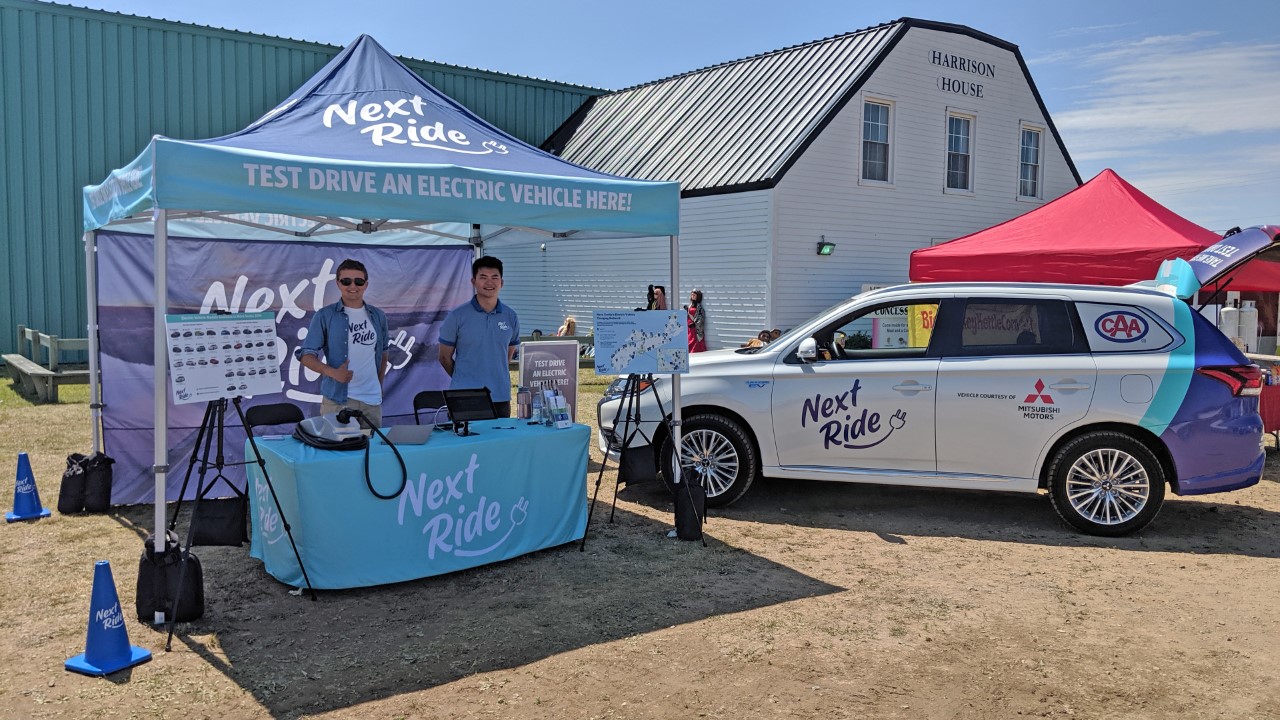Thursday, July 3, 2025
By Zack Metcalfe
Electric vehicles can’t catch a break. They’re still being accused of being short on range, short on chargers, short on options, too expensive, too high on indirect emissions, and other assorted deal-breakers. The technology has advanced so rapidly in recent years that most of these criticisms are entirely out of date, or entirely out of context. Yet many motorists’ perspectives on EVs are still stuck in the past, leaving them in sore need of a test drive and a frank conversation.
This is precisely the idea behind the Clean Foundation’s Next Ride program, launched three years ago with the goal of introducing Nova Scotians to the modern electric vehicle, with all its advantages and shortcomings laid bare. “There’s no sales pitch,” said Sarah Balloch, transportation manager with the Clean Foundation. “We drive around the province, give people a test drive, and answer their questions about electric vehicles in a no-pressure situation.”
And they do get around, bringing their small fleet of EVs to public, cultural, and sporting events; farmers’ markets; even workplaces and households across the province. That includes Zevvy, their trusty Chevy Bolt; other vehicles they borrow from local dealerships, which have included everything from the Mitsubishi Outlander plug-in hybrid to the Hyundai Kona full electric; and a Tesla Model 3, on long-term loan from the Canadian Automobile Association.

The Clean Foundation takes interested people for a test drive in “Zevvy” and answers their questions about electric vehicles in a no-pressure situation.
And they do get around, bringing their small fleet of EVs to public, cultural, and sporting events; farmers’ markets; even workplaces and households across the province. That includes Zevvy, their trusty Chevy Bolt
“It gives people the opportunity to hop in an electric vehicle and see what it’s like,” said Balloch, which is helpful “because there are a lot of misconceptions.”
For instance, while there is a lingering perception that owning an EV is more expensive than a regular vehicle, electric vehicles are approaching price parity with their gas-powered cousins, and provincial and federal rebates tend to make up most of the difference. Add the fact that EVs have far fewer moving parts, and require a fraction of the maintenance, and things start to even out pretty quickly.
Range anxiety is another commonly expressed concern: no one wants to get stuck out on the road trying to find a place to charge their phone, never mind their car. But most EVs coming on the market today can travel over 400 kilometres per charge, accommodating even the longest daily commute. The only type of trip they can’t easily handle is one aimed out of province, with charging infrastructure, while expanding quickly, still in no way challenging the ubiquity of gas stations.
There are, however, resources available for tracking down charging stations, such as smartphone and in-vehicle apps. Plus, owners enjoy the privilege of fueling up at home, so while EVs are presently at the mercy of a limited charging network, they leave the driveway every morning with a “full tank.”

A Next Ride pop up to explain EVs to Nova Scotians.
The Next Ride program doesn’t shy away from digging into these nuances and trade-offs, said Balloch: it exists to help people navigate and, hopefully, make the change to EV ownership — not to pretend that there isn’t a change to make. Some models of electric vehicles can lose up to a quarter of their range in the depths of winter. But some new models, like the Kia Niro, only drop to about 90 per cent in the winter.
And then there’s the carbon question.
A common refrain Next Ride staff hear is that an electric vehicle is only as green as the grid from which it draws power, said Balloch, but this is only partially true. Electric vehicles are significantly more efficient in their use of power than gasoline vehicles, so even when they draw on electrical grids that rely on fossil fuels, EVs ultimately generate fewer emissions. And with power from Muskrat Falls already trickling in, most of Nova Scotia’s electricity will be produced by non-emitting sources by the end of the year, puting EVs firmly ahead on emissions. Finally, while the modern gas engine is about as efficient as it will ever get, EVs will continue to get greener as the grid does.
With all of these misconceptions out of the way, a test ride with Next Ride has, in several cases, been the final nudge motorists needed to purchase an EV, said Balloch. Drivers appreciate the quiet, they love the increased torque and improved acceleration, and they get a kick out of the novelty of driving something new. Last she checked, there were roughly 600 EVs on the road in Nova Scotia, a number she expects to rise sharply with the provincial rebate announced this spring, which takes upwards of $3,000 off the price of a new electric vehicle and $2,000 off used electric vehicles.
“The ultimate goal is for everyone to be in EVs,” she said. Next Ride is helping them get there, one busted myth and grin-inducing test ride at a time.

Zack Metcalfe is a freelance journalist, columnist and
author active across the Maritimes.
Featured images courtesy of QUEST Canada, Clean Foundation and Next Ride.











